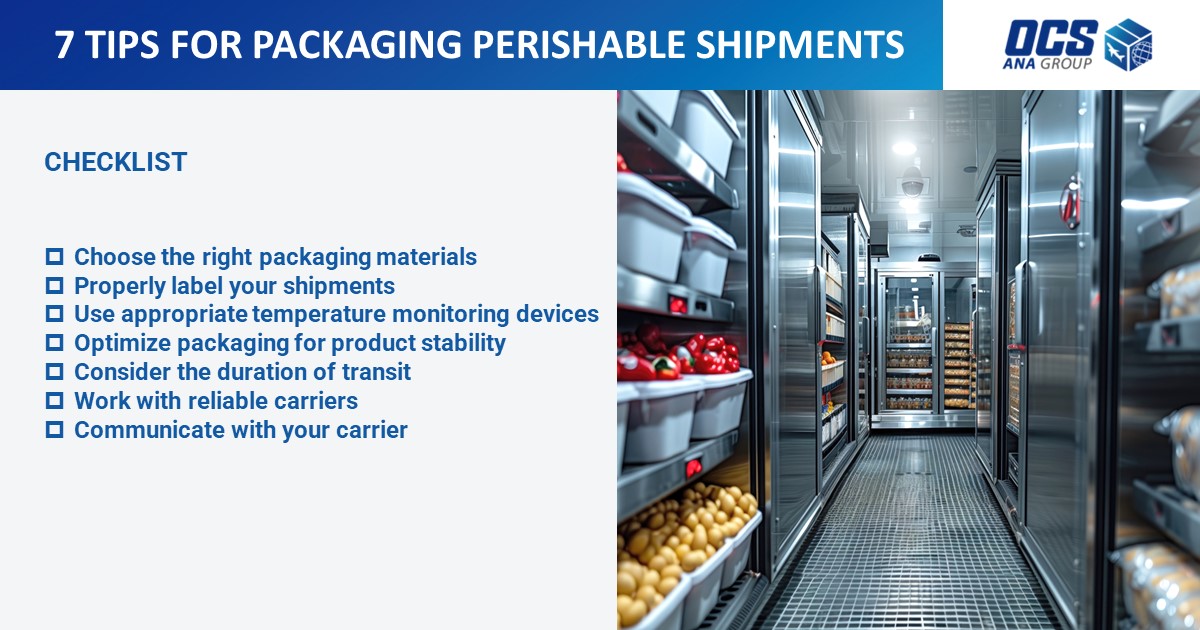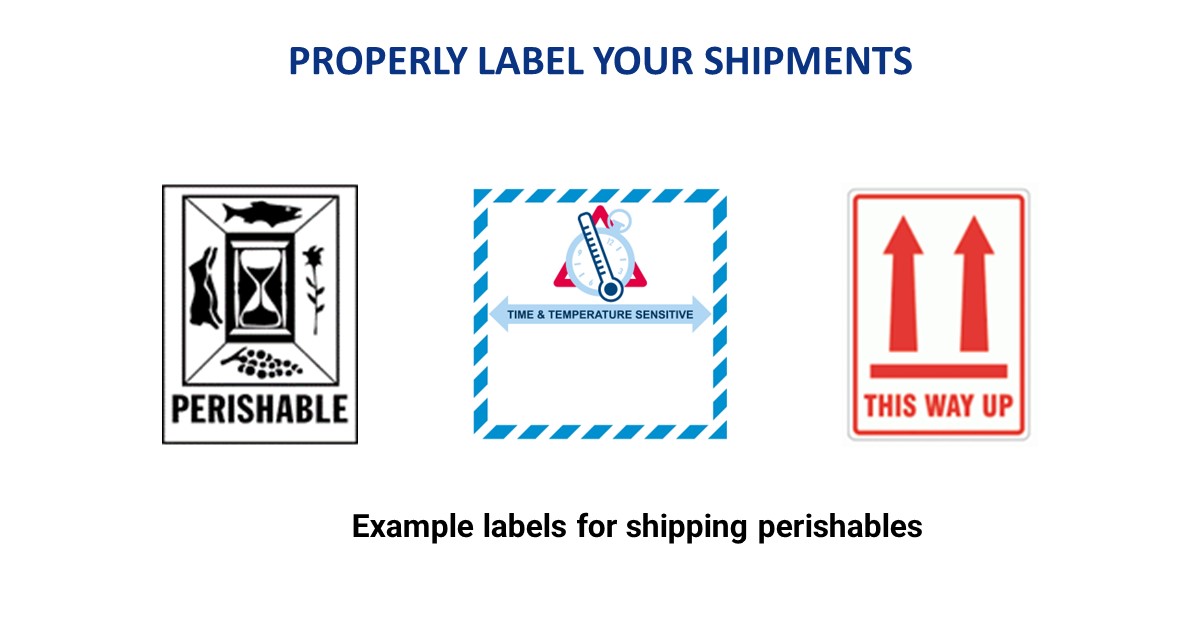What are perishable goods?
Perishable goods are defined as products that have a short shelf life and can deteriorate rapidly if they aren't stored under appropriate environmental conditions. 
These types of goods are particularly challenging to handle in international shipping due to their sensitivity to changes in temperature, humidity, and light. The category of perishable goods encompasses a wide variety of items. This includes food products such as fish, meats, fruits, vegetables, and so on, which have a high risk of spoiling if not stored and transported correctly. Non-food items such as flowers and certain types of pharmaceutical products also fall under this category, as they can lose their freshness or effectiveness if not kept at the right temperature. Given their nature, perishable goods necessitate special attention and specific storage conditions to maintain their quality, freshness, and safety, especially during international shipping where they are subjected to longer transit times and varying environmental conditions.
What are the requirements for shipping perishables?
The task of shipping perishable goods across international borders is a complex operation, requiring careful planning, coordination, and execution. The primary goal in this process is to maintain the integrity and quality of the products from their point of origin to their final destination, crossing different countries and possibly continents.
- Packaging: The packaging material must be able to withstand the rigors of long-distance transportation. Insulated packaging materials, such as polystyrene foam boxes, are commonly used in this process due to their excellent thermal insulation properties. These are typically used in combination with coolants such as ice packs, gel packs or dry ice to maintain the required temperature inside the package and prevent spoilage. In addition, the packaging should be strong enough to protect the goods from physical damage that may occur during transportation, including handling at multiple transit points.
- Temperature Control: Temperature control during the transportation of perishable goods is a critical aspect of preventing product degradation. Most perishable goods require a specific temperature range, either refrigerated or frozen, to maintain their quality. This requires the use of temperature-controlled transportation, often referred to as cold chain logistics. Cold chain logistics ensures that goods are maintained at the required temperature from the moment they are picked up until they are delivered to their final destination, regardless of external environmental conditions.
- Speed: The longer these items are in transit, the greater the risk of spoilage. Therefore, it is important to select expedited shipping options or plan transportation logistics to ensure the shortest possible transit time. This may involve coordinating with multiple carriers and planning the most efficient routes to minimize delays and transit times.
- Compliance: Shipping perishable goods across international borders often involves dealing with strict import and export regulations. These regulations can include requirements for specific documentation, packaging standards, labeling rules, and sanitary measures. It’s essential to research, understand, and comply with these regulations to prevent complications, delays, or rejections at customs.
What are the most common mistakes people make when shipping perishables?
Despite the complexities involved, certain mistakes are often made when shipping perishable goods internationally:
- Inadequate Packaging: One of the most common mistakes is using inappropriate or substandard packaging materials. This can lead to spoilage due to temperature fluctuations or physical damage during transit. Packaging must be selected based on the nature of the goods and the duration and conditions of the shipment.
- Non-compliance: A major mistake is failing to understand or comply with the import regulations of the destination country. This can lead to shipment delays, fines, or even the rejection of the shipment at customs.
- Poor Planning: Incorrectly scheduling the shipment can also cause issues. For instance, arranging pick-ups or deliveries on weekends or public holidays when many shipping services do not operate can lead to unnecessary delays.

7 Tips for Packaging Perishable Shipments:
Perishable goods are highly sensitive to time and temperature. When packing perishable shipments, it is important to maintain the quality and freshness of your goods. Whether you're shipping delicate foods or temperature-sensitive products, these tips will help you prepare shipments to arrive in pristine condition.
1. Choose the right packaging materials
Start by choosing packaging materials that provide insulation and protection. Consider using insulated containers, thermal blankets, or dry ice to maintain the desired temperature throughout the shipping process.
Commonly Used Perishable Packaging (source: IATA)
▪ Fiberboard Packaging
▪ Expanded Polystyrene Packages (EPS)
▪ Rigid Plastic Packaging
▪ Flexible Plastic Packaging
▪ Vacuum and Modified Atmosphere Packages
▪ Wooden Packaging
▪ Metal Cans and Canisters
2. Properly label your shipments

Clearly mark all packages as perishable and include handling instructions such as "Keep Refrigerated", "Do Not Freeze", or "This Way Up". This will help carriers prioritize your shipments and handle them accordingly.
3. Use appropriate temperature monitoring devices
For large or high-volume shipments, be sure to include temperature monitoring devices such as data loggers or time-temperature indicators in your packaging. These devices will help you track temperature fluctuations during transit and identify any potential problems that could affect the quality of your perishables.
4. Optimize packaging for product stability
Prevent damage or spoilage by carefully arranging your perishables within the package. Use dividers or cushioning materials to minimize movement and maintain product stability during transit.
5. Consider the duration of transit
Consider the estimated transit time when packaging your perishable shipments. If the trip is long, consider using advanced cooling systems or insulated packaging solutions that can maintain the desired temperature for an extended period of time.
6. Work with reliable carriers
Choose reputable carriers that specialize in handling perishable shipments. Make sure they have the necessary infrastructure, such as temperature-controlled vehicles and storage facilities, to maintain the integrity of your goods throughout the shipping process.
7. Communicate with your carrier
Provide your carrier with detailed instructions on the specific handling requirements for your perishable shipments. This includes any specific temperature ranges, storage instructions, or special considerations that must be followed to ensure the freshness of your goods.
By following these expert tips for packaging perishable shipments, you can rest assured that your goods will arrive at their destination in optimal condition. Remember, proper packaging and handling are key to preserving the freshness and quality of your perishables every step of the way.
Conclusion

Shipping perishable goods internationally is a complex task that requires a deep understanding of packaging, temperature control, logistics speed, and regulatory compliance. With our extensive experience and industry expertise, OCS excels in this area. We ensure that your perishables are handled with the utmost care, maintaining their quality and safety throughout their journey. Our efficient planning and logistics management also comply with international regulations. At OCS, we pride ourselves on our commitment to customer satisfaction, operational efficiency, and our ability to meet the challenges of international perishable shipping. Trust us to deliver your perishables safely, quickly, and in compliance with all regulations, regardless of borders.
For more information
■ About IEX Customize: Read more
■ OCS Global Network: Office locations
■ Case Study: (TBD)




.jpg)


.jpg)
.jpg)


